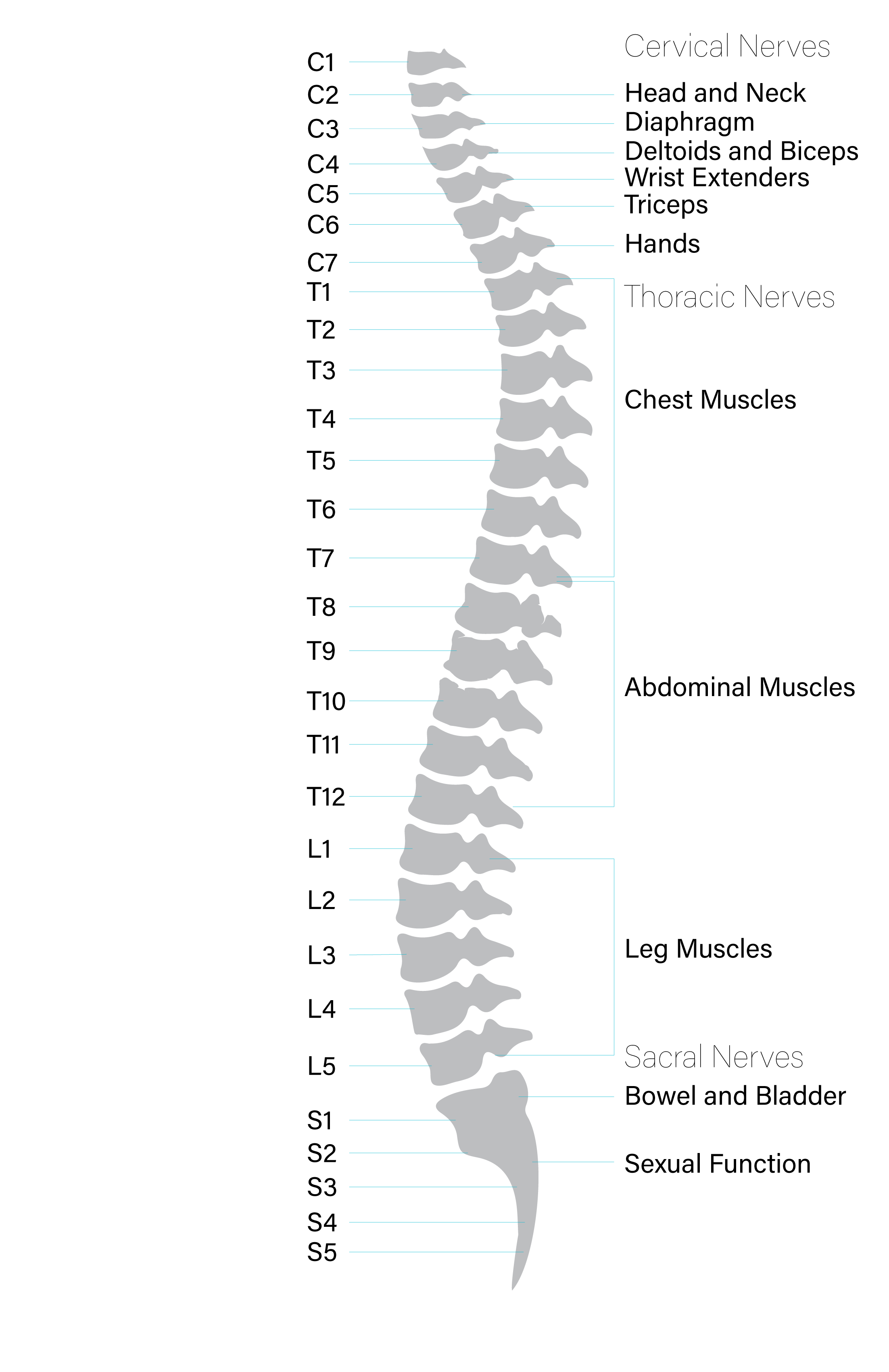The Spinal Cord

The spinal cord is surrounded by the spinal column which consists of 33 vertebrae – rings of bone that surround the spinal cord. These vertebrae are divided into five segments:
CERVICAL
The upper seven vertebrae located in the neck. The nerves in this area control head and neck movement, the diaphragm, deltoids, biceps, and muscles controlling the wrist and hands. Damage to the cervical spinal cord generally results in full or partial tetraplegia.
C1 – C3: Injury to the C1, C2 and C3 sections of the spinal cord typically results in loss of function to the neck and below, including loss of diaphragm function which necessitates a ventilator for breathing.
C4: Significant loss of function at the shoulders and below.
C5: Potential loss of functions in shoulders and biceps, complete loss of function below.
C6: Limited wrist control and loss of much hand function.
C7: Use of arms is retained, but results in a lack of hand dexterity.
THORACIC
The twelve vertebrae that extend through the chest area. Arm and hand function is unaffected.
T1 – T8: Trunk stability is affected by the inability to control abdominal muscles. The higher the injury, the more severe the effects. Some impairment of respiratory muscle function is also seen due to loss of use of the intercostal muscles that move the ribs.
T9 – T12: Results in variable loss of trunk and abdominal muscle control.
LUMBAR
The five vertebrae in the lower back. Injury to this area damages the very lowermost tip of the spinal cord or the cauda equine which results in decreased control of hips and legs, as well as bladder, bowel and sexual function.
SACRAL
The five vertebrae located in the pelvic area. As with lumbar injuries, damage to the sacral nerves can result in decreased control of hips, legs, bladder, bowel and sexual function.
COCCYGEAL
Four fused vertebrae commonly referred to as the tailbone. An injury to the coccyx is not associated with any significant loss of nerve function.

